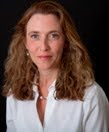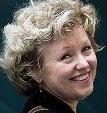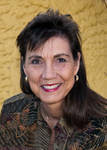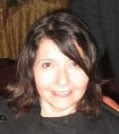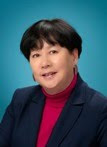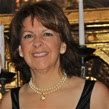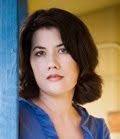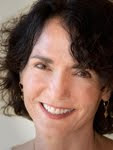By
Caitlin Rother
First I have a confession to make. After
writing Body Parts, a book about
serial rapist-killer Wayne Adam Ford, I really didn’t think I’d ever be able to
stand getting into the head of another man like him, let alone one who had
molested, raped and killed teenagers. I also have a standing rule: I cannot and
will not write stories about young murdered children. I just can’t stomach it.
But on March 4, 2010, the day after John
Gardner was arraigned for killing Chelsea King, and the same day he quietly told
his attorneys he could lead them to Amber’s body (which remained a secret for
six weeks), I got an e-mail from an editor from The Daily Beast, asking if I’d be interested in covering this case
for them.
I said yes, and spent fourteen hours
researching and writing the first article. The following week, I wrote a second
one, which was difficult because District Attorney Bonnie Dumanis had issued a
“gag order” e-mail, and the judge had also put an actual gag order in place.
But, after watching my own community reeling from the emotional fallout of this
case, I was feeling it too. I felt in my gut that I really wanted to tell this
story – both sides of it, and very much in-depth.
For me to move forward and get past my
own rule, I had to convince myself that Chelsea and Amber weren’t children,
even though some folks might disagree. Still, because of their age and out of
respect to their families, I knew I had to be extremely sensitive and
thoughtful about how I wrote this book.
Following my usual methodology, I read
every article and collected every piece of information I could, trying to
determine if I could go further than the mainstream media. With the crazy
amount of coverage, I was a bit worried at first. However, after a long series
of calls and e-mails, I was able to persuade John Gardner’s family to open up
to me. They were paid no money for telling me their story, they did it because
they wanted it to be told accurately and in full detail, not in sound bites,
and not taken out of context by the media.
Knowing that I could tell the back story
of how Gardner evolved into the man who could commit these heinous acts, I felt
I could go deeper than any reporter had gone before me. And despite the dark
subject matter, the investigative passion of revealing new facts energized me.
I felt this book was more important than some of my earlier works because
people are so scared of losing their children to sexual predators, and I felt
we could all benefit from knowing why this happens. We, as a society, seem to
have so little understanding of these men and how to deal with them. For some,
I believe, it is just too repulsive and difficult a subject to ponder, but
burying our heads in the sand won’t stop these crimes from occurring. For me, this was an opportunity to educate ALL of us.
The Gardner-Osborn family and I share a
hope that this book will help educate people by delving into the factors that contributed to
making John Gardner into a man who could not control his sexual and homicidal
compulsions, and by casting a spotlight on the flawed system that allowed him
and predators like him to roam free to prey on children, teenagers and grown
women.
Although they’ve since become
pessimistic that anything they say will help, I’m still hopeful that the
idealism that drove me into journalism years ago was right and true, and that
this story will give unprecedented insight into all the facets of a sex offender like John Gardner—the sweet,
nurturing, loving and goofy guy his family once knew, the guy who seemed
friendly and normal to people at the dog park, as well as the angry,
manipulative and violent man who brutally raped and killed these poor girls.
I hope that we, as a society, can find
ways to help people like him before they get to a breaking point or to stop
them from doing harm after they’ve reached it. And I hope that with this book,
we can learn something that will help protect us and our families from falling
to the same fate as Amber Dubois, Chelsea King and Gardner’s third victim,
Candice Moncayo, who lived to deliver a powerful victim impact statement to him
during the sentencing hearing.
I did try to speak with Candice, as well
as Chelsea’s and Amber’s parents, so I could pay a more personal tribute to
each victim by hearing their stories directly rather than piecing them together
from other sources, but they chose not to be interviewed. (I can’t tell these
stories without writing about the victims and their families – they are why we tell
these stories in the first place.) Instead, I respectfully crafted their
stories from their own words in public comments to the media, public records
and details I collected from interviews with law enforcement and other sources.
I understand that this was an enormously
traumatic event in these families’ lives, and I hope they will understand that
I had only good intentions in writing this book, that my goal was to educate
people and to help prevent tragedies like this in the future. Some victims and
their families have cooperated fully with me in my previous books, they have
told me they found relief in doing so. They have also thanked me for my
sensitive approach. But I can also see that others might find it too painful to do
the same. I’m sure these events are still fresh in the minds of Chelsea and Amber's families, and that they
are still grieving.
Nonetheless, I think we all want to change the system
in a positive way, to save lives and to keep this from happening again. This is
my way, and I hope they find some peace and success in theirs.
My hope is to continue my public education efforts at my upcoming book talks and signings. If you'd like to engage in the discussion, come hear how I put the book together or buy a signed copy, please join me at one of these upcoming events:
Launch: July 5 at 6:30 pm at the Mira Mesa Barnes & Noble
Or: July 7 at 3 pm at the Encinitas library, July 11 at 6:30 at the Oceanside Barnes & Noble, or July 21 at 3 pm at the Rancho San Diego library.
New York Times bestselling author Caitlin Rother, a Pulitzer-nominee who worked as a investigativer reporter for nearly 20 years, has written or co-authored eight books: Poisoned Love, Deadly Devotion/Where Hope Begins, My Life, Deleted, Body Parts, Twisted Triangle, Naked Addiction, and Dead Reckoning. Out on July 3 is Lost Girls about the murder of innocents Chelsea King and Amber Dubois by sexual predator John Gardner. For more information, please check her website, http://caitlinrother.com.



